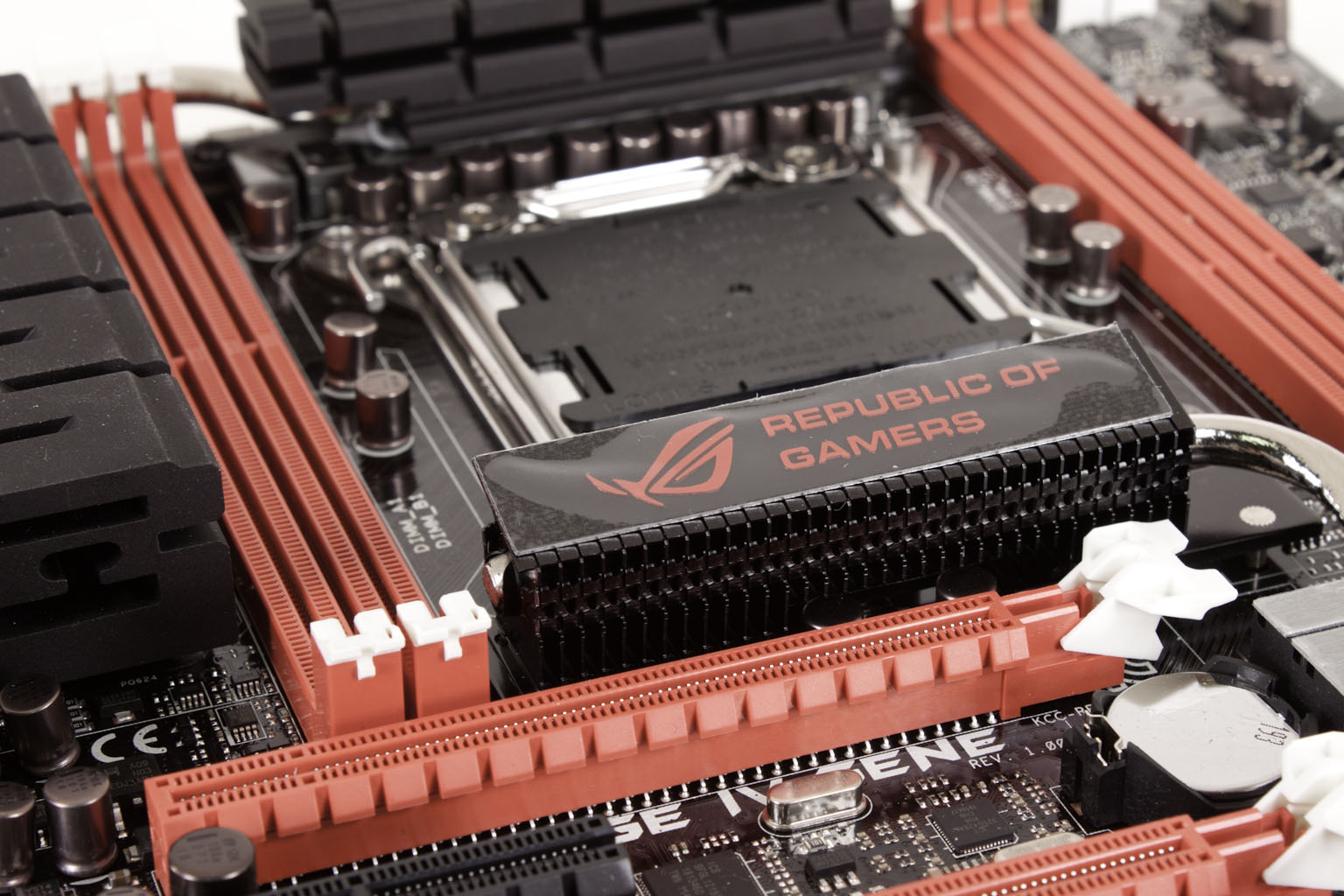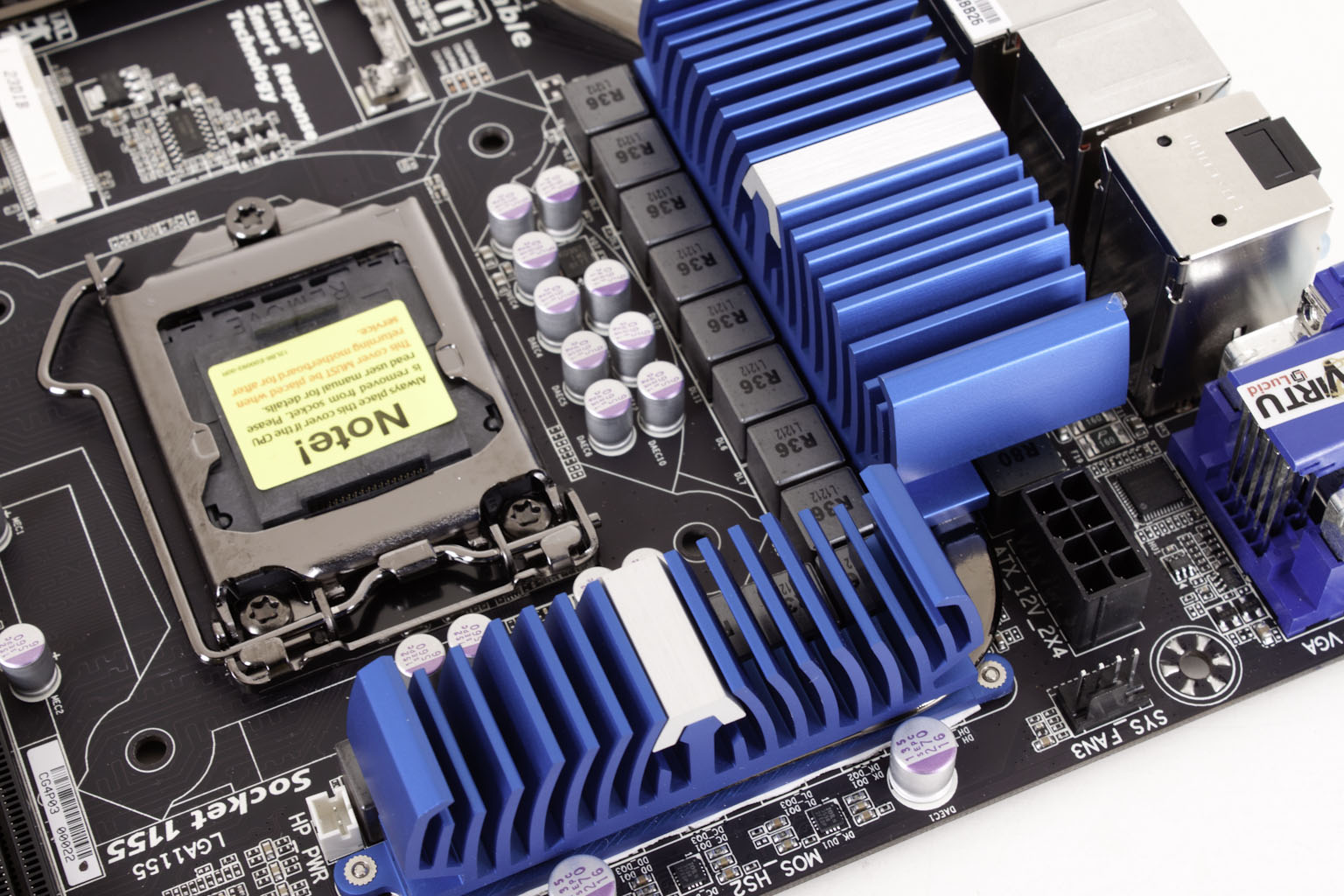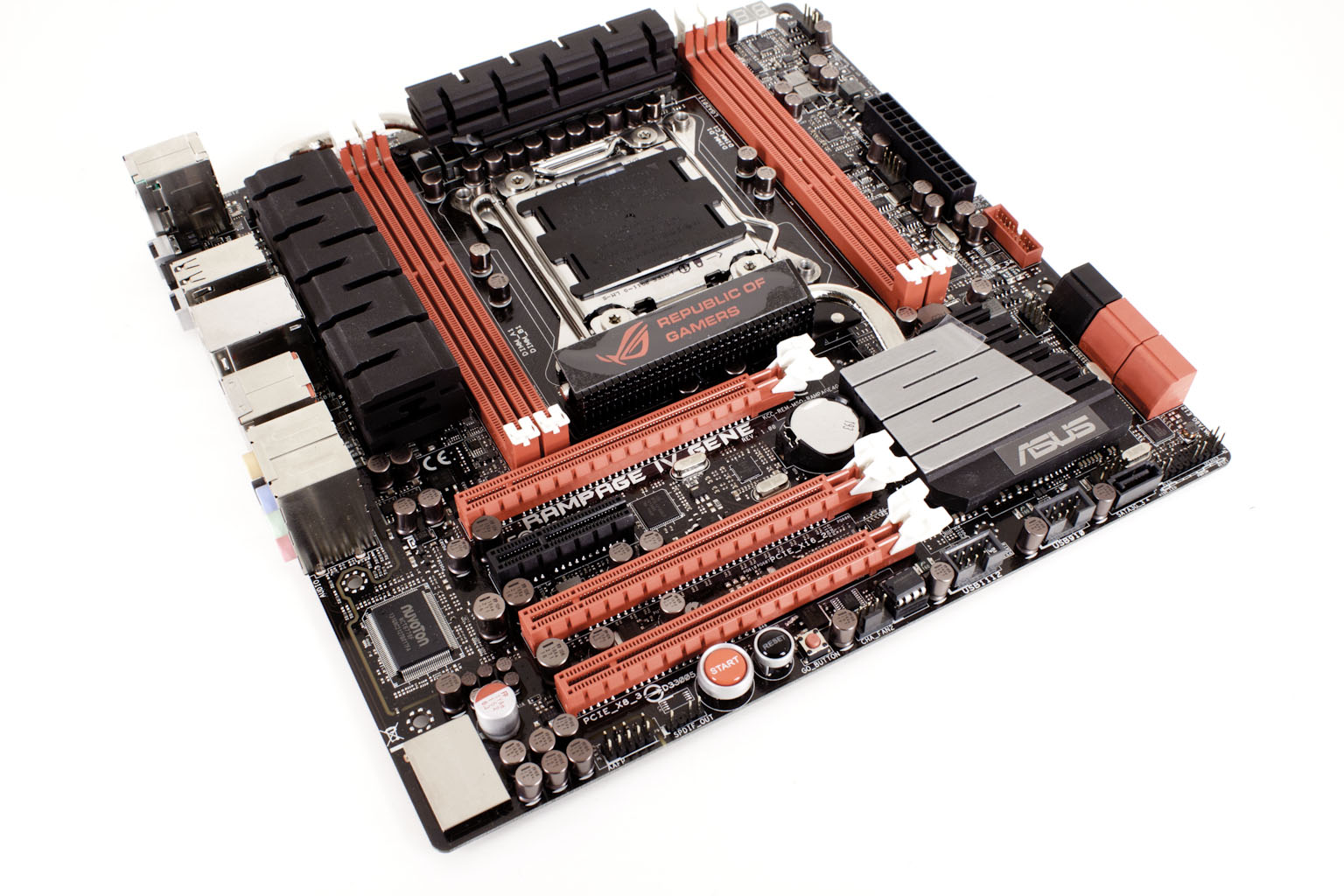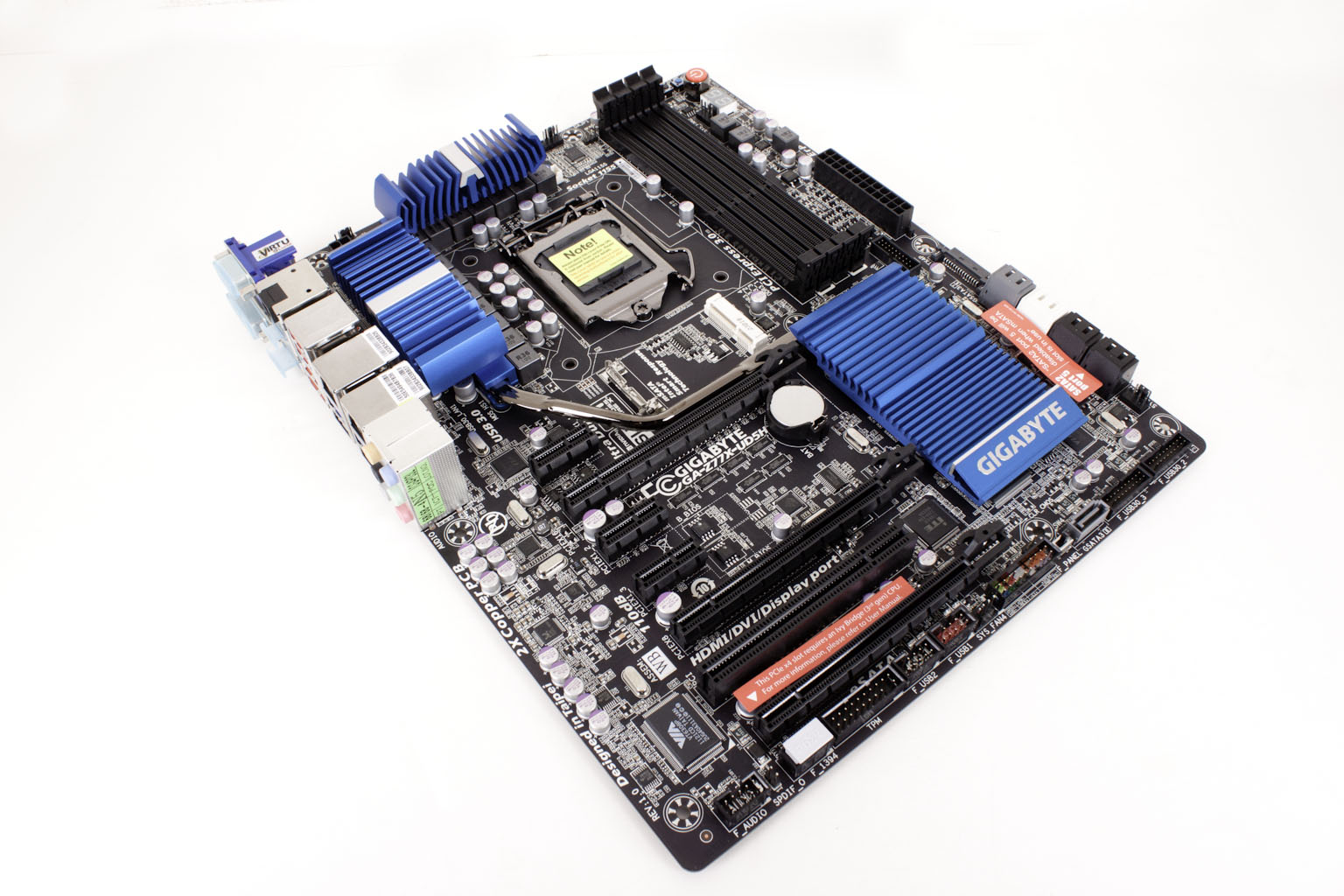Motherboards
 |
As we round out our coverage of the Asus Republic of Gamers Rampage IV Gene we are taking a look at both the synthetic and real-world performance of this board. As we have mentioned before the Gene is the gateway into the ROG Line and shows an excellent blending of performance, features and ease of use for those that are new to playing with higher end Motherboards. Of course the Gene also serves a purpose with the enthusiasts as well it offers a very competent motherboard in a small package for gaming, small and quiet systems and even for someone looking for a solid board to build a home server on. Since we have already shown you what the Rampage IV Gene looks like on paper, let’s take the tiem to show you how it looks in the real world.
- Details
- By Sean Kalinich
- Hits: 27598
 In our continuing coverage of the Gigabyte Z77X-UD5H WB we are moving into the performance side of things. Here is where it becomes difficult to differentiate between companies. The problem is that if you are testing Z77 Express based motherboards you are testing very similar platforms. It is only when you start adding in features to the mix that they separate. So the big deal here is how well do these products perform when you throw in all the advertised features (or at least as many as will work at once)? This is what we try to do with our performances testing. In our feature and design review we showed you what the Z77X-UD5H has to offer, and now we will show you how well it performs when you ask it to give you all of that at once.
In our continuing coverage of the Gigabyte Z77X-UD5H WB we are moving into the performance side of things. Here is where it becomes difficult to differentiate between companies. The problem is that if you are testing Z77 Express based motherboards you are testing very similar platforms. It is only when you start adding in features to the mix that they separate. So the big deal here is how well do these products perform when you throw in all the advertised features (or at least as many as will work at once)? This is what we try to do with our performances testing. In our feature and design review we showed you what the Z77X-UD5H has to offer, and now we will show you how well it performs when you ask it to give you all of that at once.
- Details
- By Sean Kalinich
- Hits: 28493
 With all of the news about the Z77 Express motherboards and Ivy Bridge we thought we would step back and take a look at our old friend the X79 and the Sandy Bridge-E CPU. This platform still represents the top end for Intel and although it does not have the same mainstream media acceleration that Ivy Bridge does it is still quite the platform. We are going to dive into the design and features of one of the more prominent enthusiast products for this chipset; Asus Republic of Gamers Rampage IV. We have the Rampage IV Gene and the Formula in the lab and will be running both of these through their paces in the coming days. Right now we are going to walk around the Rampage IV Gene which at $290 is a lot of money to shell out, but it also looks like a lot of motherboard in a small package. Let’s take a look shall we?
With all of the news about the Z77 Express motherboards and Ivy Bridge we thought we would step back and take a look at our old friend the X79 and the Sandy Bridge-E CPU. This platform still represents the top end for Intel and although it does not have the same mainstream media acceleration that Ivy Bridge does it is still quite the platform. We are going to dive into the design and features of one of the more prominent enthusiast products for this chipset; Asus Republic of Gamers Rampage IV. We have the Rampage IV Gene and the Formula in the lab and will be running both of these through their paces in the coming days. Right now we are going to walk around the Rampage IV Gene which at $290 is a lot of money to shell out, but it also looks like a lot of motherboard in a small package. Let’s take a look shall we?
- Details
- By Sean Kalinich
- Hits: 21400
Read more: Asus ROG Rampage IV Gene Design and Feature Review
 Moving through some of the more prominent Z77 motherboards that are out right now we come to another one from Gigabyte. Here we have the Z77X-UD5H WiFi Motherboard (Model number GA-Z77X-UD5H-WB). The UD5H is typically their second in line for the top spot in Gigabyte’s food chain The Z77X-UD7 currently holds that top crown. However the UD5 boards are always very functional and tend to combine the best of both performance and features. With this review we will be covering not only the features of the Z77X-UD5H WiFi but also come of the design choices that go into the board to get you the performance you expect on the other end. So let’s get right to it and find out if the Z77X-UD5H WiFi is worth the $210 that Gigabyte is asking.
Moving through some of the more prominent Z77 motherboards that are out right now we come to another one from Gigabyte. Here we have the Z77X-UD5H WiFi Motherboard (Model number GA-Z77X-UD5H-WB). The UD5H is typically their second in line for the top spot in Gigabyte’s food chain The Z77X-UD7 currently holds that top crown. However the UD5 boards are always very functional and tend to combine the best of both performance and features. With this review we will be covering not only the features of the Z77X-UD5H WiFi but also come of the design choices that go into the board to get you the performance you expect on the other end. So let’s get right to it and find out if the Z77X-UD5H WiFi is worth the $210 that Gigabyte is asking.
- Details
- By Sean Kalinich
- Hits: 24554
 After what seemed like a long time we are finally getting into the full performance section of our review. The Asus P8Z77-V Deluxe is a board that really has quite a bit going on which makes properly covering everything something of a chore. You can check out our design and feature coverage to see just how much there is packed into this board. Still we have tested out all of the pieces and parts and had the time to use the board in some of our testing with Ivy Bridge and the heat issues that have popped up. With that said let’s dive in right now and talk about the performance you can expect from Asus’ P8Z77-V Deluxe motherboard.
After what seemed like a long time we are finally getting into the full performance section of our review. The Asus P8Z77-V Deluxe is a board that really has quite a bit going on which makes properly covering everything something of a chore. You can check out our design and feature coverage to see just how much there is packed into this board. Still we have tested out all of the pieces and parts and had the time to use the board in some of our testing with Ivy Bridge and the heat issues that have popped up. With that said let’s dive in right now and talk about the performance you can expect from Asus’ P8Z77-V Deluxe motherboard.
- Details
- By Sean Kalinich
- Hits: 34919
More Articles …
Page 3 of 9



